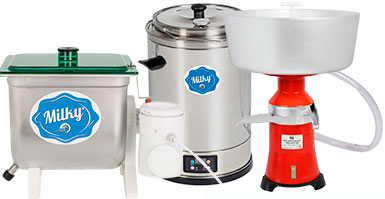With the appropriate dairy product equipment, farmers can efficiently process milk from various animals. Dairy farming is an agricultural practice that involves the mass production of milk. We primarily associate dairy with cows, but camels, sheep and goats also produce milk.
The milk may either be processed on-site, transported to a dairy factory for processing or sent to retail sellers.
A dairy is a farm dedicated to producing milk and other products such as cheese and butter.
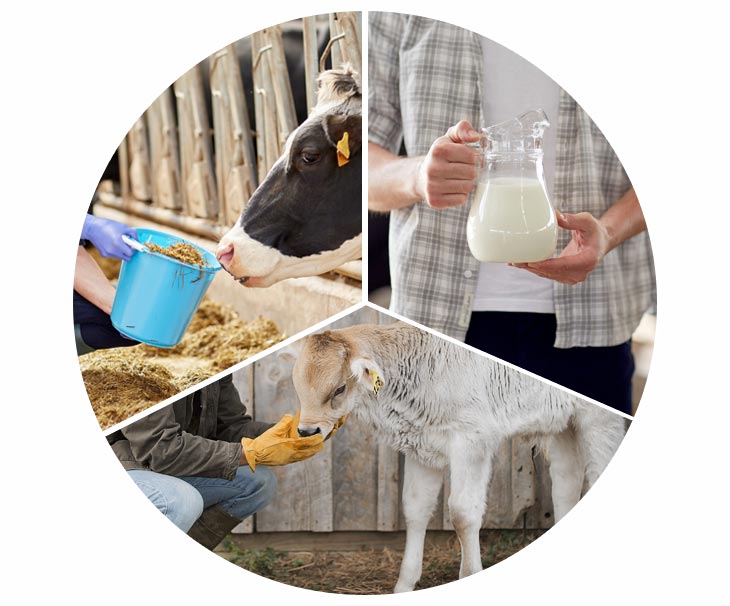
Specialized dairy farmers collect milk from dairy cattle every day. Their daily activities include milking and feeding the cows, along with helping mothers to deliver their babies (calves).
Dairy farming is a business that revolves around the good health of mother cows to produce high-grade milk and give birth to calves that become the next generation of your dairy farm and help it to grow organically. Therefore, dairy farmers are required to draft a detailed program for cow health, reproduction and calf care. They need to work with a vet to formulate a comprehensive health care plan so that your dairy runs smoothly with zero downtime.

Providing your cattle with the necessary nutrients is imperative to increase milk production. Thus, dairy farmers are required to consult nutritionists to develop meal plans for their cattle.
In the next section, we are going to talk about how to set up a dairy farm.
How To Set Up a Small Dairy Farm
First things first, setting up a dairy farm requires both money and capital—way more than any corporate business.
Even if you grew up on a farm or are an experienced businessperson, this guide will certainly help you start a cow farm.

Step 1: Planning is crucial
There is a lot of planning involved in this step. Start with a type of dairy cattle to raise for milk production.
The most prevalent dairy cattle are cows, goats, sheep and buffalos. You need to rule out the cattle that cannot survive in your region’s climate.
Next, think about the food to feed your cattle. It is advisable to set up the food source in your dairy farm to save money in the long run.
If you are new to dairy farming, then you will have to devote a considerable amount of time to learning farming practices—even if you hire dairy farmers to manage your farm.

A dairy requires capital, a space for the cattle to leave, a feed store, a milking parlor and a sterile facility for storing milk. So, pay heed to these aspects and make an initial capital investment for long-term gains.
You may have to contact your state’s government to get a license for running a dairy farm. After that, you should research the local milk market to link up with milk companies and retailers.
Step 2: Learn the basics
You and everyone in your team must undergo training to learn the basics of how to manage cattle. This is crucial to ensure your cattle stay healthy and produce a good amount of milk each day.
Learn the fundamentals about how to give your cattle the proper nutrients.
Do not forget to learn the art of milking a cow. It takes a combination of practice and patience to master it.
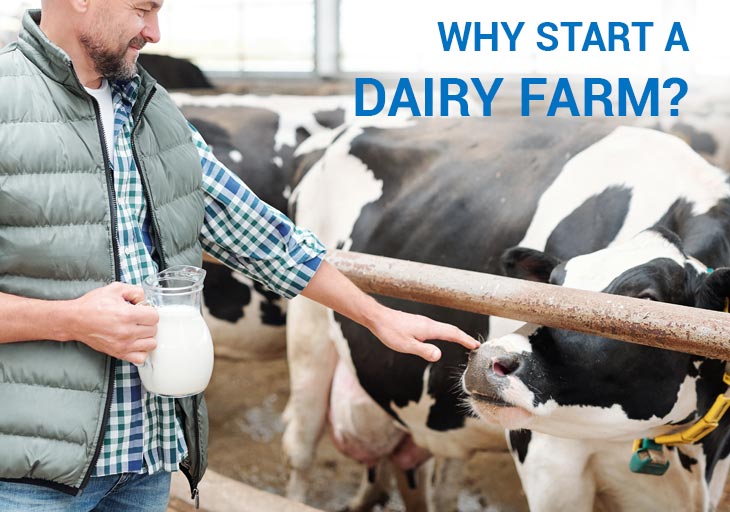
Why Start a Dairy Farm?
The milk industry is one of the few that survived the COVID-19 lockdowns and restrictions because we all need milk to boost our immunity.
Below, we’ve rounded up some compelling reasons to start a milk farm in 2021 and beyond:
- The dairy industry does not depend on rainfall. Therefore, your dairy farm will run profitably regardless of the weather conditions. You will not suffer losses even when rainfall is below average or so heavy that it causes a flood.
- Milk prices have never fallen in the history of mankind. Even if the supply is greater than the demand, the price remains the same.
- The demand for milk and its products is always strong. Both vegetarians and non-vegetarians drink milk.
- Milk is easier to market than many other industrial products. There is no need to set up franchise shops or inject thousands of dollars into marketing your dairy products.
- Dairy farming is the only agricultural industry where income is generated each month.
Things You Need To Know
Develop a Business Plan and SWOT Analysis
To start a small dairy farm, you need to draft a plan that answers the following questions:
- How many cows do you want to breed?
- How are you going to market your milk and other products?
- Do you require any additional workers?
The business plan must shed light on cash flow and expectations. A SWOT analysis must not be overlooked. It involves identifying the strengths, weaknesses, opportunities and threats associated with owning a dairy farm.
Consult the Experts
You should consult dairy farming experts. They can assist you with creating a business plan for your small dairy farm and developing a management system. It would be best to learn about the day-to-day from someone you know who runs a dairy farm. One thing to note here is that what worked for their farm may not necessarily work for yours. Gain as much knowledge as possible from consulting bankers, veterinarians and nutritionists.
Create a Cropping and Feeding Program
Creating a cropping and feeding program is essential. You must talk to certified nutritionists to know the best rations for calves, lactating cows and dry cows. Regardless of if you opt for TMR (total mixed ration), graze cattle or a combination of the two, your dairy cows need nutrients to produce high-quality milk and grow calves.
Waste Management
Your business plan must have a proper mechanism to deal with cattle waste (e.g. urine and dung) in order to maintain farm hygiene and prevent bad odors from spreading on the farm. The most effective technique is treating the waste with safe chemicals. The shed area needs to be well-ventilated and the floors must not be slippery.
Build Equity
To set up and run a dairy farm, you need to make a large capital investment. This capital includes the land for the shed where the cattle will stay and an area for maintaining equipment.
Dairy Farming Is a Biological System
When drafting your business plan, you have to keep in mind that dairy farming is a biological system that depends upon your cattle’s ability to lead a healthy life and produce milk or calves. Detailed programs for good health reproduction and calf care are needed alongside the nutritional plan. Work with a veterinarian on this.
One Size Does Not Fit All
Not all dairy farms are the same. As such, one approach doesn’t always work for all of them. Most dairy farms connect with brands and supply them with milk, while some bottle and produce their milk products. Figure out what works best for you.
You Are a Manager First
Since dairy farming is a business, management is important. You should have a plan and an overview of all the pieces of the puzzle to ensure the business is running successfully.
Major Investments and Expenses

Dairy Cows
The biggest investment and assets of your dairy farm are the dairy cattle. You have to decide on a breed of cattle. Some breeds are good for producing milk, but it lacks the cream and protein for cheese-making.

Pieces of Equipment
The three most important pieces of equipment on a modern dairy farm are a cream separator, pasteurizer machine and butter churn.
As its name suggests, a cream separator separates cream from the milk produced. It works on the principle of centrifugal force to remove cream from whole milk. It has a conical discs in the bowl that rotates 6,000 to 10,000 revolutions per minute. The centrifugal force runs the milk through the holes of the discs.
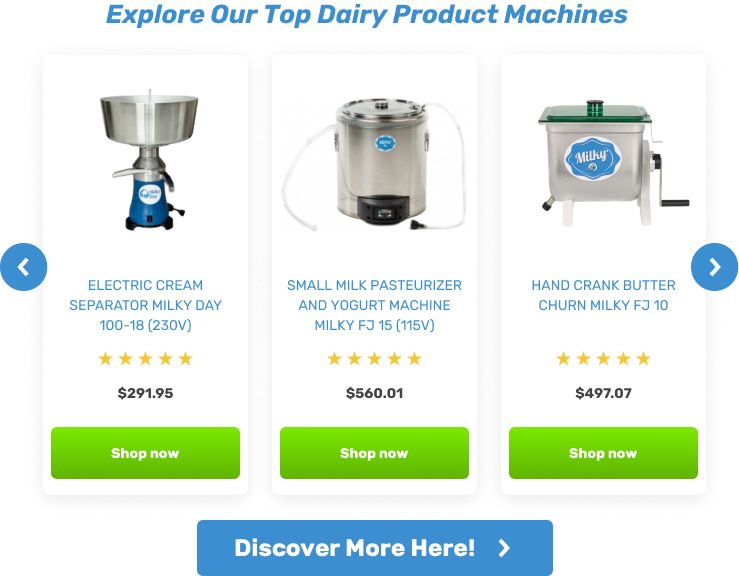
A milk pasteurizer is a multi-function tool that helps in making products like cheese or yogurt. It also eliminates pathogenic bacteria that are harmful to human health and preserves the milk’s quality.
A butter chum is a device that converts cream into butter. The churning process divides the cream into butter and buttermilk. It is a device that is easy to use and does not require intensive training to learn. There are several types of butter chums on the market, but a plunger churn that contains a stick and wooden barrel is the preferred choice.

Products
Milking cows produce milk that can further be processed to produce other staples of the American diet like cheese, cream, butter, custard, casein and yogurt. According to the International Dairy Food Association, the U.S. dairy industry is worth $628 billion.
What Are the Challenges and Opportunities?
Challenges
Disease control: Raising cows is always a challenge. You have to ensure the good health of your cattle. To that end, regular checkups are key. Train your team to look for signs of any health problems because timely treatment is crucial for quick recovery and minimal downtime. Let your cattle loose in a special shaded area to keep them fit, as moving will decrease bloating. If you must, appoint a vet to take care of the farm.

Capital: For young entrepreneurs with not enough products, investing in the capital could be a major roadblock.
Opportunities
Stable Milk Cost: Dairy prices are always climbing. They don’t fall like the Sensex.
Market Your Products: If you want to make high profits, produce, market and deliver products to your end-users.
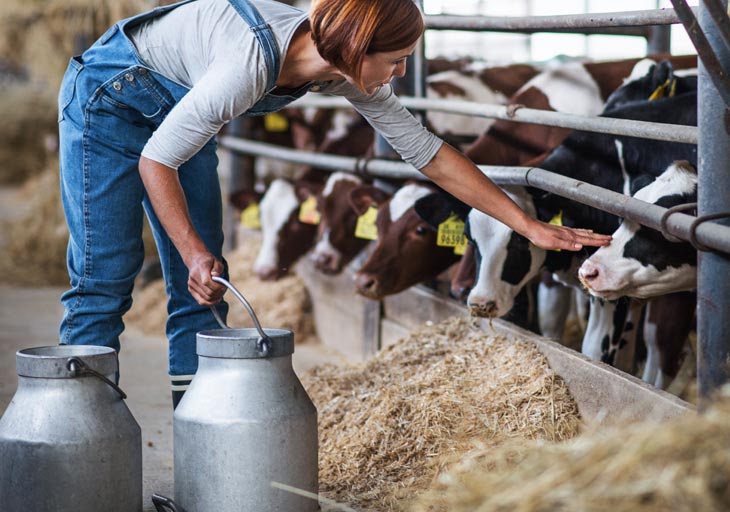
The Bottom Line
By now, you probably have a clear idea of what dairy farming is, how to set up a dairy farm and why now is the right time to take the plunge. One thing is for sure: You have to consider dairy farming as a business and your dairy cattle as your biggest assets. Therefore, they require the best care to make sure your business’s revenue grows with each passing fiscal year. Also, patience is the key for every business, so give your dairy farm time to settle down and drive revenue.

If you have anything to add from your dairy farming experience, feel free to share it in the comments section below. Our readers would love to hear from you!

